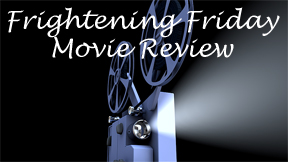When I saw “The Ring” (2002) in theaters, people openly gasped at the moment when Samara (Daveigh Chase) crawls through the TV screen. That’d be less scary today because it’s obvious that a girl can’t fit inside a flatscreen TV. Still, despite now-dated trappings such as boxy TV sets, VHS tapes and landline telephones, “The Ring” holds up as a great and hugely influential horror film, one poised at the intersection of commercial and artistic concerns.
(And actually, the fact that Samara needs people to copy a VHS tape allows this to be a slow-burn story; once YouTube came along, she could wipe out the human race in mere days.)
From Japan to Seattle
Granted, it’s not an original work, as director Gore Verbinski and writer Ehren Kruger adapt the 1998 Japanese film “Ring.” The US version moves the story to Seattle, tinged in a blue-green-gray hue by cinematographer Bojan Bazelli and featuring even more rain than in real life. A ferry ride and a world away sits a horse farm on an island where this yarn has its roots. The water motif abounds.

“The Ring” (2002)
Director: Gore Verbinski
Writers: Ehren Kruger (screenplay), Koji Suzuki (novel)
Stars: Naomi Watts, Martin Henderson, Brian Cox
Rachel (Naomi Watts) pursues the case of the missing Samara Morgan as part of her reporter job at the Post-Intelligencer, but it’s also personal. She, her son Aidan (David Dorfman) and her ex-boyfriend Noah (Martin Henderson) have all watched the pivotal VHS tape. It looks like a student film of creepy impressionist images, but they receive phone calls immediately after viewing it: A girl’s voice tells them they will die in “seven days.”
Through the ringing telephone and the opening segment, “The Ring” evokes turn-of-the-century American slashers (Kruger wrote 2000’s “Scream 3”) before it transitions to atmospheric J-horror remakes. Teen girls Katie (a pre-“Joan of Arcadia” Amber Tamblyn) and Becca (Rachael Bella) discuss the rumored existence of this very tape in a sequence that could be out of something cheesy like an “Urban Legend” sequel.
But when we later see a quick shot of frozen terror on the deceased Katie’s face, we move to something less explicitly unsettling.
Unsettling in a new way
“Ring” and its American translation are trope codifiers for pasty ghost girls with damp black hair covering their face. And they mark the resurgence of little kids who receive supernatural communications and translate them via drawings, and the re-emergence of pop-horror as serious stuff.
Nowadays, the opening graphic for Blumhouse – the maker of many low-budget but high-quality horror films – features one of those creepy girls and a chair in a room in a rundown house; those images can be traced back to the splash made by this evocatively waterlogged film.
“The Ring” is gorgeously designed in every way – an aural and visual signifier that moody ghost stories are nudging slashers aside. Hans Zimmer’s score and the sound design set the mood, and among the striking images is an overhead shot of Rachel and Noah driving on a forest highway that bridges a gorge with a waterfall nearby.

The VHS tape in question includes mesmerizing glimpses of a tree on a hilltop, a severe-looking woman combing her hair in a mirror, and what looks like a solar eclipse. It’s actually a cover being placed atop a well, and the corona of light gives the film its title.
Driven by the mystery
Also setting “The Ring” apart in 2002 is that it’s driven by a mystery. Without abandoning the foreboding feel, the story chronicles Rachel and Noah digging into what the heck the video means. Watts is an excellent Everywoman (albeit cuter than average), conveying curiosity and surprise as she digs through the P-I’s archives.
Noah’s estrangement with Rachel and Aidan – he didn’t feel capable of being a dad, since he was so young — is B-level stuff, but that’s forgivable because it’s not the main point.
A strong supporting turn comes from Brian Cox as closed-lipped farm owner Richard Morgan. And in smaller roles, it’s fun to see Tamblyn, “The O.C.’s” Adam Brody and “NCIS’s” Pauley Perrette just before their TV careers took off.
The structure of “The Ring” is clever considering that it’s establishing a template in so many ways. Rachel’s attempt to solve the mystery and survive the seven-day period is not the whole story. Another 15 minutes come after that, serving up one of the best “one last scares” in genre history.
When Samara crawls out of that TV, it cuts into our sense of safety from knowing there’s a screen between our living room and whatever horrors lay on the other side.

